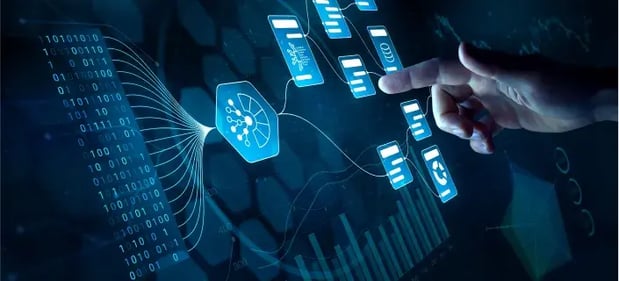
SAP Sustainability Data Exchange
Easily and securely share product carbon footprint and ESG data with suppliers.



Partner for Sustainability Without Compromising Security
“Can you share your emissions data?”
“We need proof of compliance for ESG reporting.”
“What’s your carbon footprint for this product line?”
Do such emails land in your inbox every week? Do they require a fast response, but gathering reliable sustainability data from suppliers and partners is slow, frustrating, and often incomplete?
SAP Sustainability Data Exchange speeds up reporting on its environmental impact.
It’s a secure, standardized platform that makes it easy to collect, share, and trust sustainability data across your entire value chain. Built for businesses that rely on complex networks of suppliers and partners, it helps you break through the data silos and get the full picture of your sustainability data right when you need it.
Why SAP Sustainability Data Exchange is Worth It: Key Benefits for Your Business
Collaborate across your supply chain
Standardize sustainability data exchange
Stay ahead of compliance requirements
Gain visibility into emissions and ESG metrics
Share data securely
Strengthen your brand and reputation
What You Can Do With SAP Sustainability Data Exchange
Data request and sharing
- Proactively request and share accurate product carbon footprint data from your supply chain.
- Automatically collect primary data from suppliers, ensuring precision in carbon footprint calculations.
- Minimize human error by automating the data-gathering process.
- Enable secure, standardized data exchange that complies with industry regulations.
- Empower your partners with immediate access to sustainability data.
- Improve your partners' ability to align with your sustainability goals and strategies.
- Share data seamlessly across departments, ensuring that all stakeholders have the latest information.
How We Can Help

Consulting

Implementation

Integration

Support

Administration
Industries We Serve
Why LeverX?
Proven track record
Industry experts
SAP partnership
Quality and security
Investment in innovation
Flexibility
Implementation Roadmap
- Current processes evaluation: Assess existing business processes and identify the organization's needs.
- Defining technical requirements: Create a detailed specification of the functional and technical needs of the new system.
Discover
- Setting goals and objectives: Establish and agree on the goals to be achieved throughout the project.
- Assembling the project team: Appoint team members and define their roles and responsibilities.
- Project plan development: Create a comprehensive plan that outlines project phases, timelines, resources, and key performance indicators.
- Budget determination: Estimate and approve the budget.
- Specifications preparation: Develop the technical and functional specifications for the development team.
Prepare
- Ensuring business requirements are met: Check that SAP Sustainability Data Exchange aligns with business requirements and project objectives.
- Data validation: Verify the accuracy and compliance of the data.
Explore
- Data migration: Transfer data from existing systems to the new one.
- System configuration: Set up the solution according to requirements and specifications.
- Customization: Develop additional features and modules, if the standard solution does not meet all needs.
- Integrations: Configure SAP Sustainability Data Exchange to work with other IT systems and applications.
Realize
- Testing: Perform functional, integration, regression, and load testing to ensure that all works correctly.
- User training: Organize sessions to help users become familiar with the new system.
Deploy
- System readiness check: Verify that the system is ready for operational use.
- Launch: Officially transition to active use of SAP Sustainability Data Exchange.
- Ongoing support: Continuously monitor solution performance to identify and resolve any issues.
Run
FAQ
What is SAP Sustainability Data Exchange?
Do my suppliers and partners need to be SAP users to exchange data?
How does the solution adapt to the specific sustainability standards of different industries?
How long does a typical implementation project for SAP Sustainability Data Exchange take?
Beyond compliance, how does this data lead to actionable business improvements?
Contact Us
What happens next?
-
1
An expert will reach out to you to discuss your specific needs and requirements.
-
2
We'll sign an NDA to ensure any sensitive information is kept secure and confidential.
-
3
We'll work with you to prepare a customized proposal based on the project's scope, timeline, and budget.
years of expertise
projects
professionals
Contact Us
CONTACT US
If you are looking for an SAP Global Strategic Supplier or Technology Partner for your business, fill out the form below, and we will contact you at short notice.